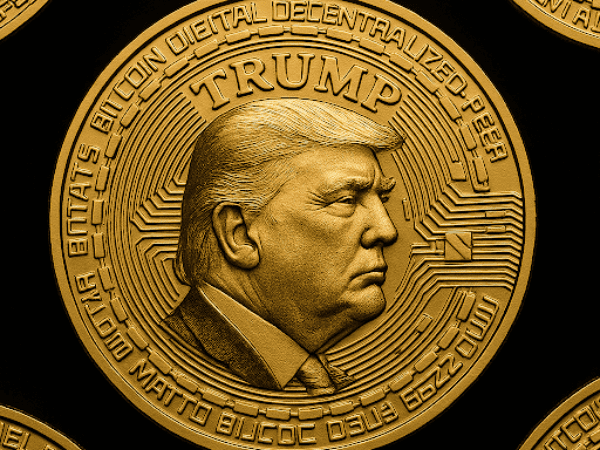
While the U.S. government isn’t switching entirely to cryptocurrency, it’s taking significant steps towards integrating digital assets into its financial system and national policy.
Here’s a breakdown:
1. Strategic Bitcoin Reserve and Digital Asset Stockpile:
-
- The Trump administration established a Strategic Bitcoin Reserve, treating Bitcoin as a reserve asset, according to The White House.
-
- This reserve is capitalized with Bitcoin seized in criminal or civil asset forfeiture proceedings.
-
- The U.S. government will not sell Bitcoin deposited into the reserve but will maintain it as a store of value.
-
- A U.S. Digital Asset Stockpile was also created for other digital assets seized by the government.
2. Exploring a Central Bank Digital Currency (CBDC):
-
- The Federal Reserve has been actively researching the potential benefits and risks of a U.S. CBDC, according to the Federal Reserve Board.
-
- A CBDC would be a digital form of central bank money, potentially offering a new payment option for households and businesses.
-
- However, the Federal Reserve has made no decision on issuing a CBDC and would only proceed with Congressional authorization.
-
- Executive Order 14178 prohibits agencies from taking steps to establish or promote a CBDC.
3. Regulation and Oversight:
-
- The U.S. government is working towards establishing a regulatory framework for digital assets.
-
- This framework would aim to balance responsible innovation with consumer protection, financial stability, and national security.
-
- The CLARITY Act, recently introduced, aims to provide regulatory clarity for the digital asset industry.
In summary: The U.S. government is not replacing the dollar with cryptocurrency, but it is actively engaging with the digital asset space through strategic reserves, research into CBDCs, and the development of a regulatory framework.
An Update for 2025
Recent developments in U.S. policy signal a significant shift toward broader government involvement in cryptocurrency, though not a complete replacement of traditional currency. Instead, the government is integrating digital assets into its financial system and reserves, with potential ripple effects for the economy.
Key Developments:
-
- In March 2025, President Donald Trump signed an executive order establishing two national cryptocurrency reserves: a Strategic Bitcoin Reserve and a U.S. Digital Asset Stockpile. These reserves are primarily composed of digital assets seized by federal agencies, positioning cryptocurrencies alongside gold and foreign currencies in the nation’s reserves269.
How Could This Affect the Economy?
Potential Benefits:
Risks and Challenges:
-
- Financial Stability: Widespread adoption could disrupt banking and payment systems, raising concerns about consumer protection and systemic risk, especially during financial crises11.
-
- Public Sentiment: While crypto owners are generally supportive of government reserves, overall public support remains limited, and there are concerns about the government’s ability to regulate the sector effectively10.
Comparison: Traditional Currency vs. Government Crypto Reserves
| Feature | Traditional Currency (USD) | Government Crypto Reserves |
|---|---|---|
| Stability | High | Low (volatile) |
| Backing | Central bank, economy | Market value, blockchain security |
| Regulation | Comprehensive | Evolving, less mature |
| Role in Reserves | Primary | Supplementary, experimental |
| Public Acceptance | Universal | Growing, but limited |
Conclusion
The U.S. government is not replacing the dollar with cryptocurrency, but it is taking concrete steps to integrate digital assets into its financial infrastructure269. This move could diversify reserves, stimulate innovation, and enhance U.S. influence in global digital finance. However, it also introduces volatility and regulatory challenges, making the long-term impact on the economy uncertain. The coming years will be pivotal in determining whether these bold steps will strengthen the economy or expose it to new risks.
Could the US fully replace traditional currency with crypto soon?
A full replacement of traditional U.S. currency with cryptocurrency in the near future is highly unlikely. While digital payments and blockchain technology are rapidly growing in influence, several key factors make a complete switch improbable:
-
- Government Policy: The current U.S. administration has explicitly ruled out the creation of a retail central bank digital currency (CBDC), or “digital dollar,” halting any ongoing work on such a project. This contrasts with other countries, like those in Europe and Asia, which are moving forward with CBDC pilots5.
-
- Coexistence, Not Replacement: Most experts and analysts expect a hybrid system, where digital assets, cryptocurrencies, and traditional fiat currency coexist. Cryptocurrencies are increasingly seen as complementary to, rather than replacements for, the dollar17. Blockchain technology may be integrated to improve transparency and efficiency, but not to fully supplant the existing monetary system13.
-
- Adoption and Infrastructure: In developed countries like the U.S., the dollar remains deeply entrenched in the economy, and adoption rates for cryptocurrency as a primary means of exchange are still low. The most likely scenario is continued growth in digital currency use alongside fiat, not a wholesale switch146.
In summary, while the use of digital currencies and blockchain technology will continue to expand and influence the financial system, a full replacement of the U.S. dollar with cryptocurrency is not expected soon. The future points to integration and coexistence, not outright substitution157.
You Might Also Like:
- Is the Government Switching to Cryptocurrency? An Update for 2025
- Coinbase Carves A Buy Point After S&P 500 Inclusion: Is Coin Stock A Buy Now?
- AI Stocks Face ‘Show Me’ Moment. Nvidia Earnings Due With China In Focus.
- 6 Natural Gas ETFs and Funds to Buy
- Crypto Regulations in the US—A Complete Guide (2025)
